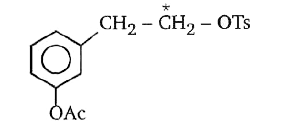Which products formed during the light reaction of photosynthesis are used to drive the dark reaction ?
Step-by-Step Solution:
1. Understanding Photosynthesis: Photosynthesis consists of two main stages: the light reactions and the dark reactions (Calvin cycle). The light reactions occur in the thylakoid membranes of the chloroplasts and require light energy.
2. Products of Light Reactions: During the light reactions, two key products are generated:
- ATP (Adenosine Triphosphate): This molecule serves as an energy currency in cells.
- NADPH (Nicotinamide Adenine Dinucleotide Phosphate): This molecule acts as a reducing agent, providing the necessary electrons for the reactions in the dark phase.
3. Role of ATP and NADPH in Dark Reactions: The ATP and NADPH produced during the light reactions are essential for driving the dark reactions. Specifically:
- ATP provides the energy required for various biochemical processes.
- NADPH supplies the reducing power needed for the conversion of carbon dioxide into glucose.
4. Carbon Fixation and Glucose Formation: In the dark reactions, carbon dioxide is fixed and ultimately converted into glucose. This process utilizes the energy from ATP and the reducing power from NADPH.
5. Conclusion: The products formed during the light reactions, ATP and NADPH, are crucial for the dark reactions of photosynthesis, facilitating the fixation of carbon dioxide and the synthesis of glucose.
Final Answer: The products formed during the light reaction of photosynthesis that are used to drive the dark reaction are ATP and NADPH.
---
- ATP (Adenosine Triphosphate): This molecule serves as an energy currency in cells.
- NADPH (Nicotinamide Adenine Dinucleotide Phosphate): This molecule acts as a reducing agent, providing the necessary electrons for the reactions in the dark phase.
- ATP provides the energy required for various biochemical processes.
- NADPH supplies the reducing power needed for the conversion of carbon dioxide into glucose.
Topper's Solved these Questions
- BOOK - NCERT EXEMPLAR ENGLISHCHAPTER - PHOTOSYNTHESIS IN HIGHER PLANTSEXERCISE - Short Answer Type Question20videos
PHOTOSYNTHESIS IN HIGHER PLANTS
- BOOK - NCERT EXEMPLAR ENGLISHCHAPTER - PHOTOSYNTHESIS IN HIGHER PLANTSEXERCISE - Long Answer type Question13videos
PHOTOSYNTHESIS IN HIGHER PLANTS
- BOOK - NCERT EXEMPLAR ENGLISHCHAPTER - PHOTOSYNTHESIS IN HIGHER PLANTSEXERCISE - Long Answer type Question13videos
PHOTOSYNTHESIS IN HIGHER PLANTS
- BOOK - NCERT EXEMPLAR ENGLISHCHAPTER - NEURAL CONTROL AND CO-ORDINATIONEXERCISE - LONG ANSWER TYPE QUESTIONS3videos
NEURAL CONTROL AND CO-ORDINATION
- BOOK - NCERT EXEMPLAR ENGLISHCHAPTER - PLANT GROWTH AND DEVELOPMENT EXERCISE - Long Answer Type Question3videos
PLANT GROWTH AND DEVELOPMENT
Similar Questions
Knowledge Check
- Question 1 - Select One
Product(s) formed during this reaction is/are :
 A
A B
B C
C Dboth (a) and (b)
Dboth (a) and (b)
The first step in the light reaction of photosynthesis is
View SolutionWhich is related to light reaction of photosynthesis
View SolutionDuring dark reaction of photosynthesis
View SolutionThe products of light reaction of photosynthesis is
View SolutionDark reaction of photosynthesis occurs in
View SolutionLight reaction of Photosynthesis occurs inside
View SolutionThe product formed in the reaction,
 Product is View Solution
Product is View Solution

